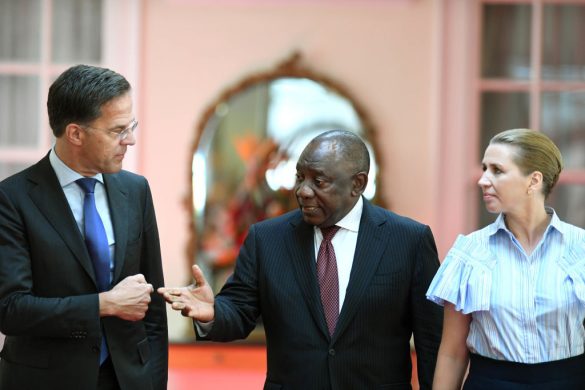Antallet af folk, der flygter fra Røde Havs-landet er stigende. FNs flygtningeorganisation har opdaget en ny ”trend”: Unge uddannede mænd fra byerne, der flygter for at undgå værnepligt, der kan strække sig på ubestemt tid.
HITSATS, Ethiopia, June 13, 2013 (UNHCR): The UN refugee agency has opened a new camp in northern Ethiopia to house the increasing number of Eritrean refugees entering the country. A total 776 Eritrean refugees have already been transferred to Hitsats Camp, which can house up to 20,000 refugees.
“This is a big step forward in the protection of Eritrean refugees in this area,” said Michael Owor, head of UNHCR’s sub-office in Shire, which has erected 200 family tents and dug a communal well to handle the arrival of the new refugees at the camp on land provided by the Ethiopian government.
The government has also set up a temporary medical clinic and reception facilities for arriving refugees.
So far this year, UNHCR and the government’s refugee agency, the Administration for Refugee and Returnee Affairs (ARRA), have registered more than 4,000 Eritrean refugees, overwhelming the capacity of the existing three camps in the region, which house nearly 49,000 refugees. A large number of the new arrivals are unaccompanied minors who require special protection.
Young educated men from the cities
What is unusual is that most of the Eritrean refugees fleeing to Ethiopia are young educated men from cities, unlike most refugee situations where the majority of refugees are women and children.
The predominance of young men is a pattern observed throughout the region, where Eritrean refugees tell UNHCR staff they are fleeing indefinite military service for both men and women.
Children arriving on their own
In eastern Sudan, the UN refugee agency has also seen a significant number of children arriving on their own, but the number of refugee arrivals has dropped to between 400 and 600 per month this year from 2,000 a month in 2012. The total number of Eritrean refugees in Sudan is more than 114,500.
In Djibouti, arrivals are holding steady, at 112 for the first five months of this year, practically the same as the 110 Eritreans who arrived in the same period last year.
Eritrean refugees cross into Ethiopia through 16 entry points from which they are collected and brought to a reception station for screening and registration. Before departure from the reception centre, the refugees are issued with basic assistance items, including sleeping mats, blankets, jerry cans, water buckets, soap and mosquito nets. They are also provided with tents and food rations once they get to the new camp.
As of the end of May, Ethiopia is hosting 71,833 Eritrean refugees in four camps in Tigray region and two others in the Afar region in north-eastern Ethiopia. Transfers to the new camp are taking place every second day.















